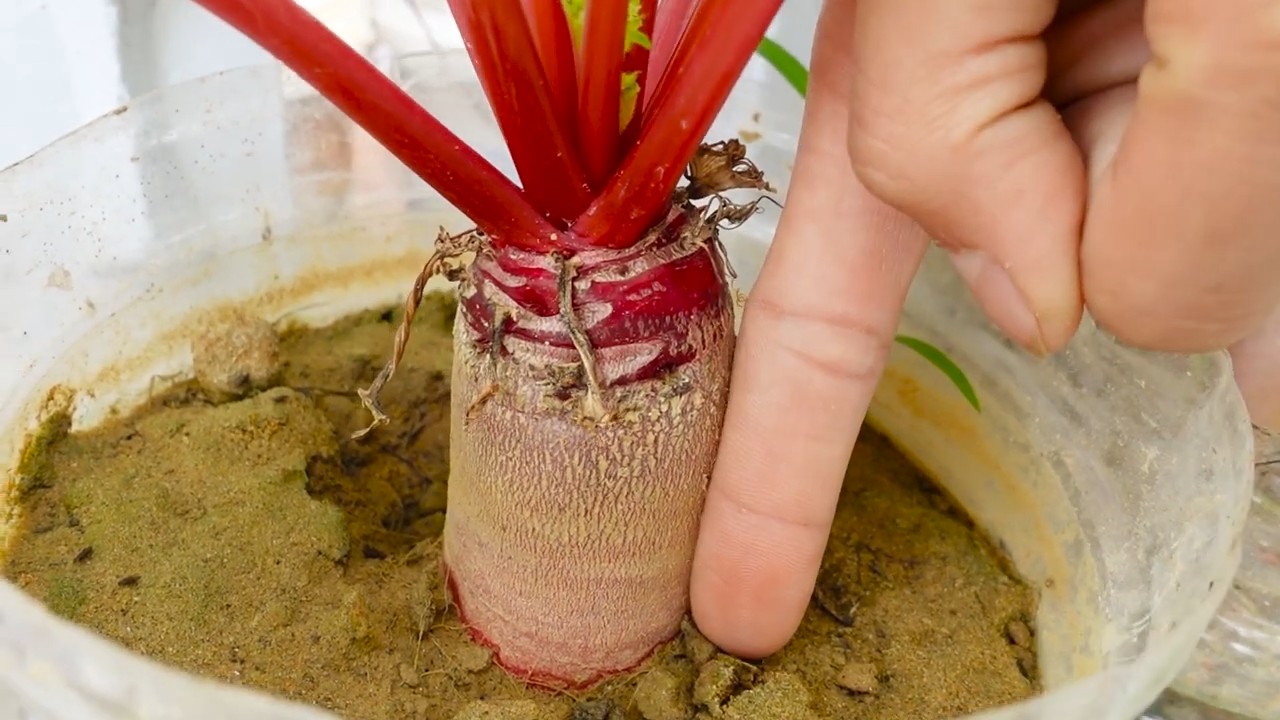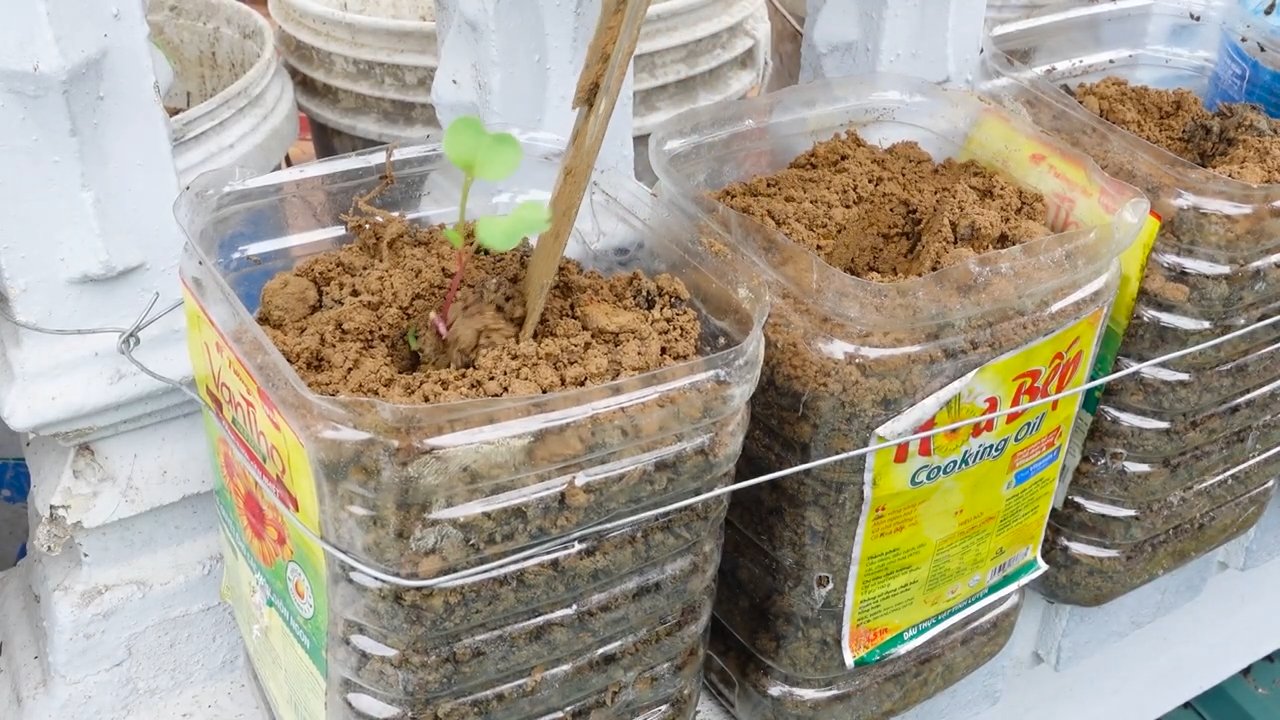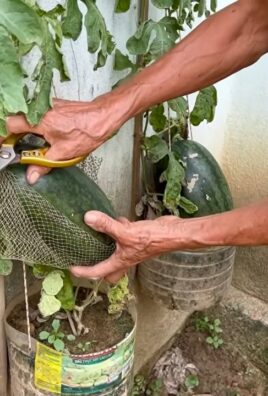Grow Beets at Home and unlock a world of vibrant color and earthy sweetness right in your backyard! Have you ever imagined plucking ruby-red beets fresh from the soil, knowing exactly where they came from and how they were grown? This isn’t just a dream; it’s an achievable reality with a few simple tricks and DIY techniques.
Beets have a rich history, dating back to ancient times when their leafy greens were prized more than their roots. Over centuries, they’ve journeyed across continents, becoming a staple in diverse cuisines, from borscht in Eastern Europe to roasted salads in the Mediterranean. But beyond their culinary appeal, growing your own beets connects you to this long and fascinating agricultural lineage.
Why should you bother with this DIY project? Well, store-bought beets often lack the freshness and flavor of homegrown varieties. Plus, you have complete control over what goes into your garden, ensuring your beets are free from harmful pesticides and chemicals. More importantly, learning to grow beets at home is incredibly rewarding. Imagine the satisfaction of serving a meal featuring beets you nurtured from tiny seeds to plump, delicious vegetables. This article will guide you through easy-to-follow steps and clever hacks to make your beet-growing journey a success, even if you’re a complete beginner. Let’s get our hands dirty and cultivate some beet-iful goodness!

Growing Beets Yourself: Your Guide to a Bountiful Harvest
Hello garden friends! I am so excited to show you today how you can grow your own delicious beets at home. It’s easier than you think, and the result is simply unbeatable—fresh, crisp beets straight from your garden! Let’s get started!
What You Need for Growing Beets
Before we start planting, here is a list of the things you’ll need:
- Beet seeds: Choose a variety you like! There are red, yellow, striped ones—the selection is huge.
- Garden tools: A shovel, a rake, and possibly a dibber.
- Good soil: Beets love loose, well-draining soil. Compost is your friend!
- Watering can or garden hose: For watering.
- Fertilizer (optional): An organic fertilizer can promote growth.
- Patience: Beets take time to grow.
The Right Location for Your Beets
Beets are sun-worshippers! They need at least 6 hours of sunlight per day to grow optimally. Make sure the location is well-drained, because they do not like waterlogging at all.
Step-by-Step Guide to Growing Beets
Here comes the exciting part: the actual sowing and care of your beets.
1. Preparing the Soil
- Loosen the soil: Use a shovel or digging fork to loosen the soil well. Remove stones, roots, and weeds.
- Work in compost: Spread compost generously over the area and work it into the soil. This improves the soil structure and provides the beets with nutrients.
- Rake: Use a rake to smooth the surface and break up any clumps.
2. Sowing the Beet Seeds
- Make seed furrows: Use a dibber or your finger to make seed furrows about 25-30 cm (10-12 inches) apart. The furrows should be about 2-3 cm (1 inch) deep.
- Sow the seeds: Place the beet seeds in the furrows. Make sure they are not too close together. A distance of about 5-7 cm (2-3 inches) between seeds is ideal.
- Cover with soil: Gently cover the seeds with soil and press down lightly.
- Water: Gently water the seed furrows so the soil is moist but not wet.
3. Caring for the Beet Plants
- Watering: Keep the soil moist, but avoid waterlogging. It’s best to water in the morning or evening to minimize evaporation.
- Weeding: Regularly remove weeds so the beet plants have enough space and nutrients.
- Thinning: When the beet plants are about 5-7 cm (2-3 inches) tall, you should thin them. This means removing the weakest plants so the stronger ones have enough space to grow. The distance between plants should be about 10-15 cm (4-6 inches).
- Fertilizing (optional): If you wish, you can fertilize the beet plants with an organic fertilizer during their growing phase. Pay attention to the dosage instructions.
4. Harvesting the Beets
- Harvest time: The harvest time depends on the variety and growing conditions. As a rule, beets are ready to harvest after about 8-10 weeks. You’ll know they’re ready when the bulbs have reached the desired size.
- Harvesting: Gently pull the beets out of the ground. You can also use a digging fork to lift them out.
- Remove the greens: Remove the leaves and the taproot.
- Storing: Beets can be stored in the refrigerator or in a cool, dark cellar.
Common Problems and Solutions
Problems can also arise when growing beets. Here are some of the most common problems and how you can solve them:
- Pests: Aphids, flea beetles, and slugs can attack beets. Check your plants regularly and combat pests with natural remedies, such as nettle tea or neem oil.
- Diseases: Fungal diseases can occur if the plants are too close together or if the humidity is too high. Ensure good ventilation and remove affected leaves.
- Yellow leaves: Yellow leaves can be a sign of a nutrient deficiency. Fertilize the plants with an organic fertilizer.
- Root rot: Waterlogging can cause the roots to rot. Ensure good drainage and do not water too much.
Variety Recommendations for Growing Beets
There are countless beet varieties, each with its own advantages. Here are a few of my favorites:
- ‘Rote Kugel’ (Red Ball): A classic, round, red beet with a sweet taste.
- ‘Chioggia’: A striped beet with a mild flavor.
- ‘Golden’: A yellow beet with an earthy taste.
- ‘Albina Vereduna’: A white beet with a very mild flavor.
- ‘Boltardy’: A very early variety that also grows well in cooler temperatures.
Growing Beets in Pots
No garden? No problem! You can also grow beets in pots or containers. Make sure the pots are large enough (at least 20 cm / 8 inches in diameter) and have good drainage. Use high-quality potting soil and fertilize the plants regularly.
Beets as Companion Plants
Beets are good neighbors for many other types of vegetables. They pair particularly well with:
- Onions: They keep pests away.
- Garlic: Similar to onions.
- Lettuce: It benefits from the shade provided by the beets.
- Cabbage: Beets can help deter cabbage whites.
Avoid planting beets next to chard or spinach, as they have similar nutrient needs and can compete with each other.
Beets in the Kitchen
Beets are not only healthy but also incredibly versatile in the kitchen. You can use them raw in salads, boil, roast, bake, or pickle them. The greens are also edible and can be prepared like spinach.
Here are a few ideas:
- Beet Salad: Slice cooked beets and serve with goat cheese, walnuts, and a balsamic dressing.
- Beet Soup: A warming soup with beets, potatoes, and carrots.
- Beet Chips: Bake thin beet slices in the oven until they are crispy.
- Pickled Beets: A delicious side dish for meat dishes.
Additional Tips for a Successful Beet Harvest
Mulch: A layer of mulch made of straw or grass clippings helps to keep the soil moist and suppress weeds.
Test the soil: If you are unsure whether your soil is suitable for growing beets, you can have it tested.
Practice crop rotation: Do not grow beets in the same spot every year to prevent diseases and pests.

Conclusion
So, there you have it! Growing beets at home is not only achievable, but it’s also a deeply rewarding experience that connects you with the food you eat. Forget those bland, pre-packaged beets from the grocery store. Imagine the vibrant colors, the earthy sweetness, and the satisfying crunch of beets you’ve nurtured from tiny seeds to robust roots. This isn’t just about saving money; it’s about enhancing your culinary creations and embracing a more sustainable lifestyle.
This DIY approach to growing beets offers a level of control and customization you simply can’t get any other way. You choose the variety, tailoring the flavor profile to your exact preferences. Want something sweet and tender? Opt for a ‘Chioggia’ beet with its beautiful candy-striped interior. Prefer something earthy and robust? ‘Detroit Dark Red’ is your go-to. And don’t forget the greens! Beet greens are a nutritional powerhouse, packed with vitamins and minerals, and they’re delicious sautéed, steamed, or added to salads.
Beyond the basic method, there are countless ways to experiment and personalize your beet-growing journey. Try succession planting, sowing seeds every few weeks, to ensure a continuous harvest throughout the growing season. Companion planting can also boost your beet’s growth and deter pests. Marigolds, for example, are known to repel nematodes, while garlic can help ward off aphids. Consider growing your beets in raised beds or containers if you have limited space or poor soil. This allows you to create the ideal growing environment, ensuring optimal drainage and nutrient availability.
Growing beets at home is a simple yet profound way to connect with nature and elevate your cooking. The satisfaction of harvesting your own food, knowing exactly where it came from and how it was grown, is truly unparalleled.
We wholeheartedly encourage you to give this DIY trick a try. Don’t be intimidated if you’re a beginner gardener. Beets are relatively easy to grow, and even a small patch can yield a surprisingly abundant harvest. Start small, experiment with different varieties, and don’t be afraid to make mistakes. Gardening is a learning process, and every season brings new opportunities to improve your skills.
Once you’ve harvested your homegrown beets, the culinary possibilities are endless. Roast them with herbs and olive oil for a simple yet elegant side dish. Pickle them for a tangy and refreshing snack. Add them to salads for a burst of color and flavor. Or blend them into smoothies for a nutritional boost. The only limit is your imagination!
We’re confident that you’ll be amazed by the flavor and quality of homegrown beets. So, grab some seeds, get your hands dirty, and experience the joy of growing your own food. And most importantly, we want to hear about your experience! Share your tips, tricks, and photos with us in the comments below. Let’s build a community of beet-loving gardeners and inspire others to embrace the joys of homegrown goodness. Happy gardening!
Frequently Asked Questions (FAQ)
What is the best time to plant beets?
The ideal time to plant beets depends on your climate. Beets are a cool-season crop, meaning they thrive in temperatures between 60°F and 70°F (15°C and 21°C). In most regions, you can plant beets in early spring, about 2-3 weeks before the last expected frost. You can also plant them in late summer for a fall harvest. For a continuous supply, consider succession planting, sowing seeds every 2-3 weeks. Check your local weather forecasts and planting guides for the most accurate timing in your area.
What kind of soil do beets need?
Beets prefer well-drained, loose soil that is rich in organic matter. They also need a soil pH between 6.0 and 7.0. Before planting, amend your soil with compost or well-rotted manure to improve drainage and fertility. Avoid soils that are heavy in clay, as they can restrict root growth and lead to misshapen beets. If you have clay soil, consider growing your beets in raised beds or containers.
How much sunlight do beets need?
Beets need at least 6 hours of sunlight per day to thrive. Choose a planting location that receives full sun for the majority of the day. If you live in a particularly hot climate, some afternoon shade can be beneficial to prevent the beets from bolting (going to seed prematurely).
How often should I water my beets?
Beets need consistent moisture to develop properly. Water them deeply and regularly, especially during dry periods. Aim to keep the soil consistently moist but not waterlogged. A good rule of thumb is to water when the top inch of soil feels dry to the touch. Mulching around your beet plants can help retain moisture and suppress weeds.
Why are my beet greens growing, but not the roots?
Several factors can contribute to this issue. One common cause is overcrowding. Beets need adequate space to develop their roots. Thin your seedlings to ensure they are spaced at least 3-4 inches apart. Another possible cause is nutrient deficiency. Beets need phosphorus and potassium to develop healthy roots. Amend your soil with a fertilizer that is high in these nutrients. Finally, excessive nitrogen can promote leafy growth at the expense of root development. Avoid using fertilizers that are high in nitrogen.
What are common pests and diseases that affect beets?
Common pests that affect beets include aphids, flea beetles, leaf miners, and nematodes. Aphids can be controlled with insecticidal soap or neem oil. Flea beetles can be deterred with row covers or diatomaceous earth. Leaf miners can be handpicked or controlled with insecticidal soap. Nematodes can be managed with crop rotation and soil solarization. Common diseases that affect beets include leaf spot and damping-off. Leaf spot can be prevented by providing good air circulation and avoiding overhead watering. Damping-off can be prevented by using sterile potting mix and avoiding overwatering.
Can I eat beet greens?
Absolutely! Beet greens are a nutritional powerhouse and are delicious cooked or raw. They can be sautéed, steamed, added to salads, or used in soups and stews. Beet greens are a good source of vitamins A and C, as well as iron and fiber. Harvest the outer leaves as needed, leaving the inner leaves to continue growing.
How do I know when my beets are ready to harvest?
Beets are typically ready to harvest when the roots are 1-3 inches in diameter. You can gently brush away the soil around the base of the plant to check the size of the roots. The harvest time also depends on the variety of beet you are growing. Consult your seed packet for specific information.
Can I grow beets in containers?
Yes, beets can be successfully grown in containers. Choose a container that is at least 8-12 inches deep and wide to allow for adequate root development. Use a well-draining potting mix and provide consistent moisture. Container-grown beets may need to be fertilized more frequently than those grown in the ground.
What are some different varieties of beets I can grow?
There are many different varieties of beets to choose from, each with its own unique flavor and appearance. Some popular varieties include ‘Detroit Dark Red’ (a classic, all-purpose beet), ‘Chioggia’ (a sweet and tender beet with candy-striped interior), ‘Golden’ (a mild and sweet beet with golden flesh), and ‘Cylindra’ (a long, cylindrical beet that is easy to slice). Experiment with different varieties to find your favorites!




Leave a Comment